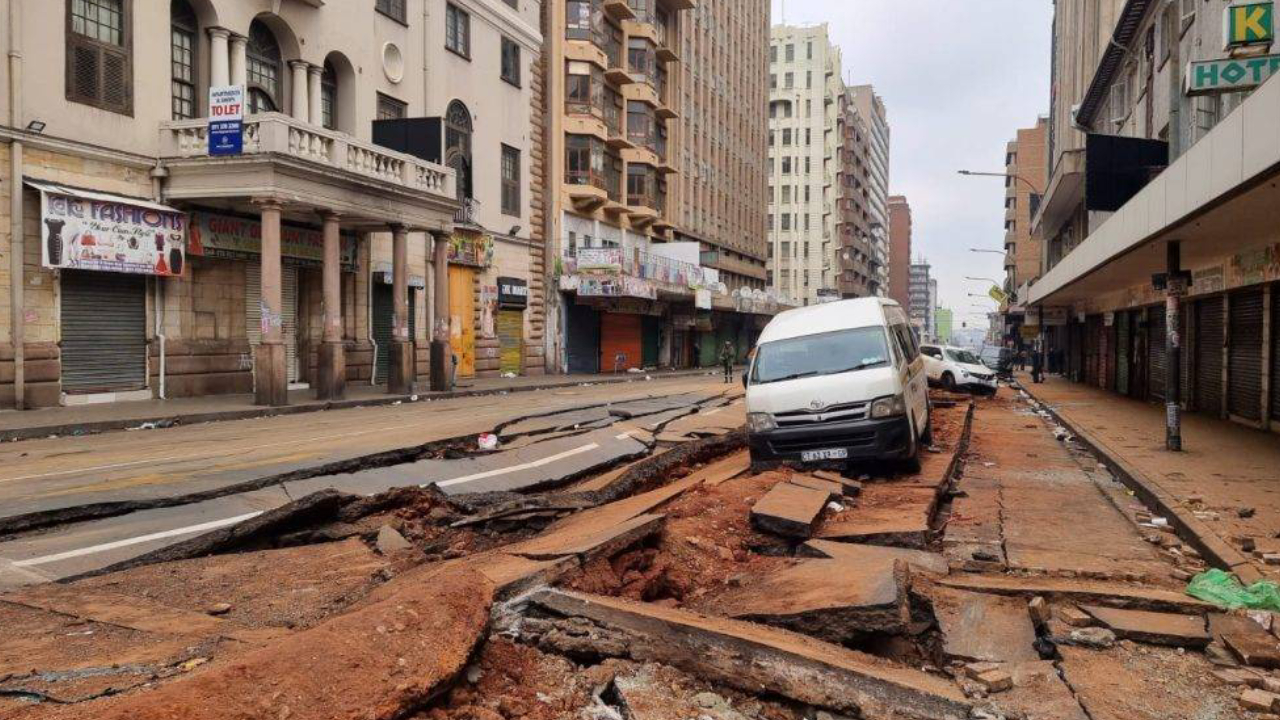- A build up of methane gas was found to be the cause of the Bree Street explosion that left one person dead and many injured on Wednesday 19th July 2023.
- CoJ says, however, that they were not able to find the exact source of the gas.
- The city says it will begin upgrading underground infrastructure across Johannesburg in order to avoid similar events in the future.
The investigation into the cause of the Lillian Ngoyi Street (formerly Bree Street) explosion in the centre of Johannesburg that saw one person die and many injured has concluded. Officials from the City of Johannesburg have said that methane gas was the cause.
In milliseconds, a wave of pressure erupted from within the street itself, sending vehicles and people flying metres into the air along its length. Then suddenly it was over, almost as fast as the entire event occurred. Experts and citizens were left puzzled into why it even happened in the first place.
The investigation began almost immediately on 19th July and was concluded in early August when the results were revealed to the public. City of Johannesburg (CoJ) city manager Floyd Brink revealed that the methane that caused the explosion travelled up along service tunnels beneath the city’s streets and began building up right under Bree Street until it explosion
In a sinister twist, CoJ was not able to identify from where the methane originated, according to SA News.
“Methane is lighter than air so usually methane…will go up,” explained Brink. “It travelled up all along the service tunnel from an unknown source to the crest of the tunnel near the Von Brandis Street.”
Even though there was only one fatality, Brink explained how it could have been much worse. If the methane build up was above 15 percent there would have been a fiery explosion possibly resulting more grievous injuries and further loss of life.
“There were always questions around why did we not see any fire… If you look at the low explosive level, there’s a threshold of between 5 and 15%. If it’s between 5 to 15% it will be an explosion, anything above 15% will then create a fire,” he said.
So basically the explosion was caused by a small build up of methane that managed to burst just enough to rip the street open, but soon enough to not have enough built up for a flaming explosion.
CoJ flew drones into affected tunnels and found that there was no presence of scorch marks, meaning that at no point was there any fire involved and the explosion was caused by pressure build up.
As the investigation concludes, and the source of the methane is still unknown, Brink said that at least they can rule out a few other suspected causes, including a gas leakage from eGoli Gas pipes, negligence on the part of CoJ infrastructure maintenance and illegal underground mining ie “Zama Zamas.”
In total the city spent close to R4 million on “professional experts, services, the cordoning off of the site, technology that we’ve used and the provision of temporary relief” immediately following the blast.
The focus of efforts are turning towards rebuilding the former Bree Street after the explosion, with CoJ earmarking around R178 million towards closing up the ripped-apart road and underground piping.
“That is preliminary to look at what it will cost us for the road, what it will cost us for any other infrastructure damages and also to reconstruct that particular tunnel,” Brink said.
The fact that the source of the gas has yet to be discovered, CoJ is now looking into ways that other explosions of the same nature or worse don’t occur in the city. Starting with upgrades to underground infrastructure not only focused on the former Bree Street.
“The tunnel designs will be upgraded based on current international codes for tunnels to reduce the risk of severity for these types of explosions. We will also introduce continuous gas detection, alarms, sensors and monitors for all staff working in the tunnels,” he said.
Johannesburg is an old city, founded in the 1880s, but surely some sort of underground infrastructure upgrade should have been done already, especially as the tunnels beneath the CBD are not up to international codes, as Brink says.
“As we move forward to reconstruct and to upgrade these particular areas, we would need to upgrade to ensure that we use technology. Our tunnels designs will be based on international relevant standards… that focusses specifically on tunnels and explosion prevention with accidental combustible gas release in tunnels and/or cavities,” he concluded.
[Image – SA News on Twitter]

